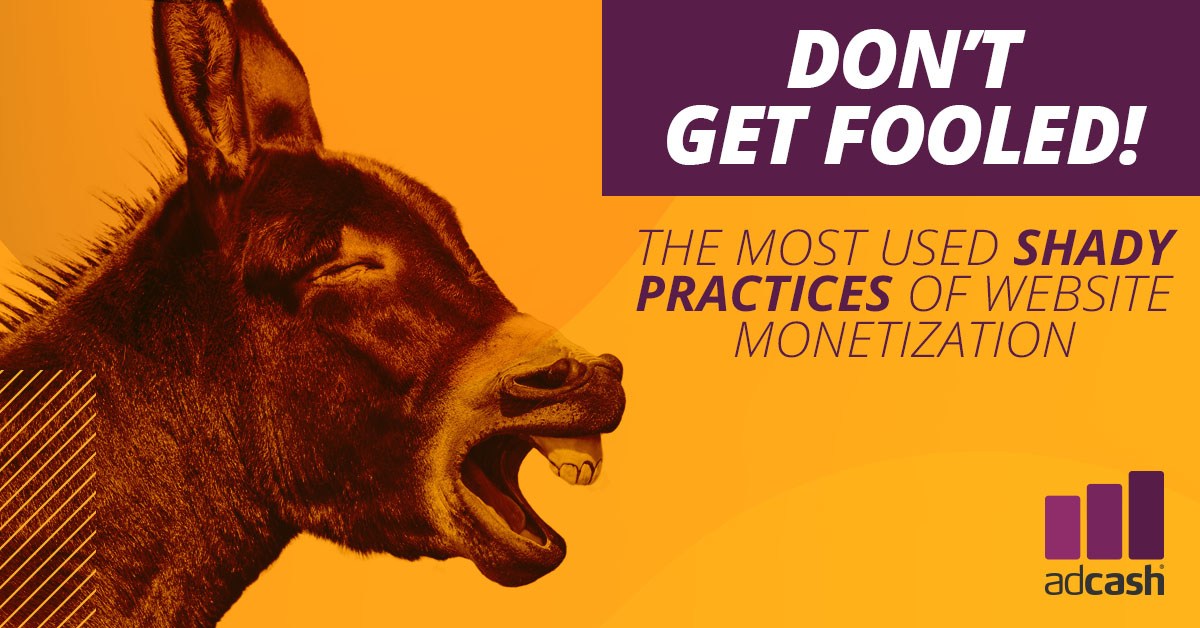Impressions shaving
As stated earlier, “understanding the monetization performance is key to have a good balance between user experience and earnings”. While this is true with any type of advertising, this logic is further reinforced when it comes to more intrusive ads. For instance, it’s obvious that a website having an abusive usage of full screen type of ad formats, should expect some of its visitors to:
- Leave the website due to overwhelming ads
- Find an alternative website that provides the same content with better user experience
- Keep on using the website as their main access to such content but not engaging with the ads
With that in mind, most publishers understand that eCPM is the metric they should look at to understand whether or not the financial return is worth the impact on the user experience.
Some dishonest players in the ad tech industry have started manipulating their statistical data to boost up their publishers’ eCPMs. How is that done? Simply by not showing 100% of the ad impressions, they have generated in their publishers’ panel statistics (aka “impressions shaving”). Let’s take a look at the examples below:
EXAMPLE 1
Context: www.website.com is testing 2 different platforms offering Pop-Under ad format.
Advertising platform 1: Generates 100K ad impressions
This is an honest platform that doesn’t manipulate the statistical data.
Statistics shown on your publisher account: 100K ad impressions, $100 earnings, $1.0 eCPM.
Advertising platform 2: Generates 100K ad impressions
This is a shady player that manipulates the statistical data (shaving 60% of ad impressions).
Statistics shown on your publisher account: 40K ad impressions, $100 earnings, $2.5 eCPM.
In this case, a publisher that is not familiar with such dodgy practice will most likely end up picking “Advertising platform 2”. Because it seems to provide similar earnings while having less impact on the user experience. In reality, Advertising platform 2 isn’t providing better user experience, they are simply misleading their publishers by manipulating their statistics.
EXAMPLE 2
Context: www.website.com is testing 2 different platforms offering Pop-Under ad format. The publisher is expecting to get a “fixed CPM” offer from both platforms after the initial test.
Advertising platform 1: Generates 100K ad impressions
This is a trustworthy platform that doesn’t manipulate the statistical data. Also, they respect the frequency capping that was set in agreement with the publisher.
Statistics: 100K ad impressions, $100 earnings, $1.0 eCPM.
Advertising platform 2: Generates 130K ad impressions
This is a malicious player who doesn’t respect the frequency capping that the publisher agreed to. In addition, they manipulate the statistical data (shaving 30% of ad impressions).
Statistics shown on your publisher account: 100K ad impressions, $130 earnings, $1.3 eCPM.
Following the test period, the publisher ends up picking Advertising platform 2 since it has offered a fixed CPM of $1.3 to the publisher, while Advertising platform 1 made a fixed CPM offer of $1. In reality, a dropping user experience is hiding behind the higher earnings as it is received by showing more ads than the publisher allowed. Further, as Advertising platform 2 is shaving 30% of the publisher’s ad impressions, the actual fixed CPM the publisher gets is not $1.3 but rather $1.0.
By now, you should understand that in those 2 cases, the owner of www.website.com is getting fooled again by “Advertising platform 2”.









Join the conversation
2 comments
DD on Sep 10, 2019 at 11:48 am
Is there any tool I could use to check how many ad impressions and impressions are actually generated? to check whether I'm being shaved?
Geoff Kukard on Jul 27, 2020 at 9:54 am
Hi DD, Thanks for your question. The best tool to check if you fall into a shady practice case would be to compare your Google Analytics data with the statistics of your current ad provider. When doing this, it also pays to take note of the setup applied (frequency capping) If you need any additional support in this, please reach out to us at [email protected] and a member of our team would be happy to provide a consultation.
Submit a comment
Your email address will not be published. Required fields are marked *